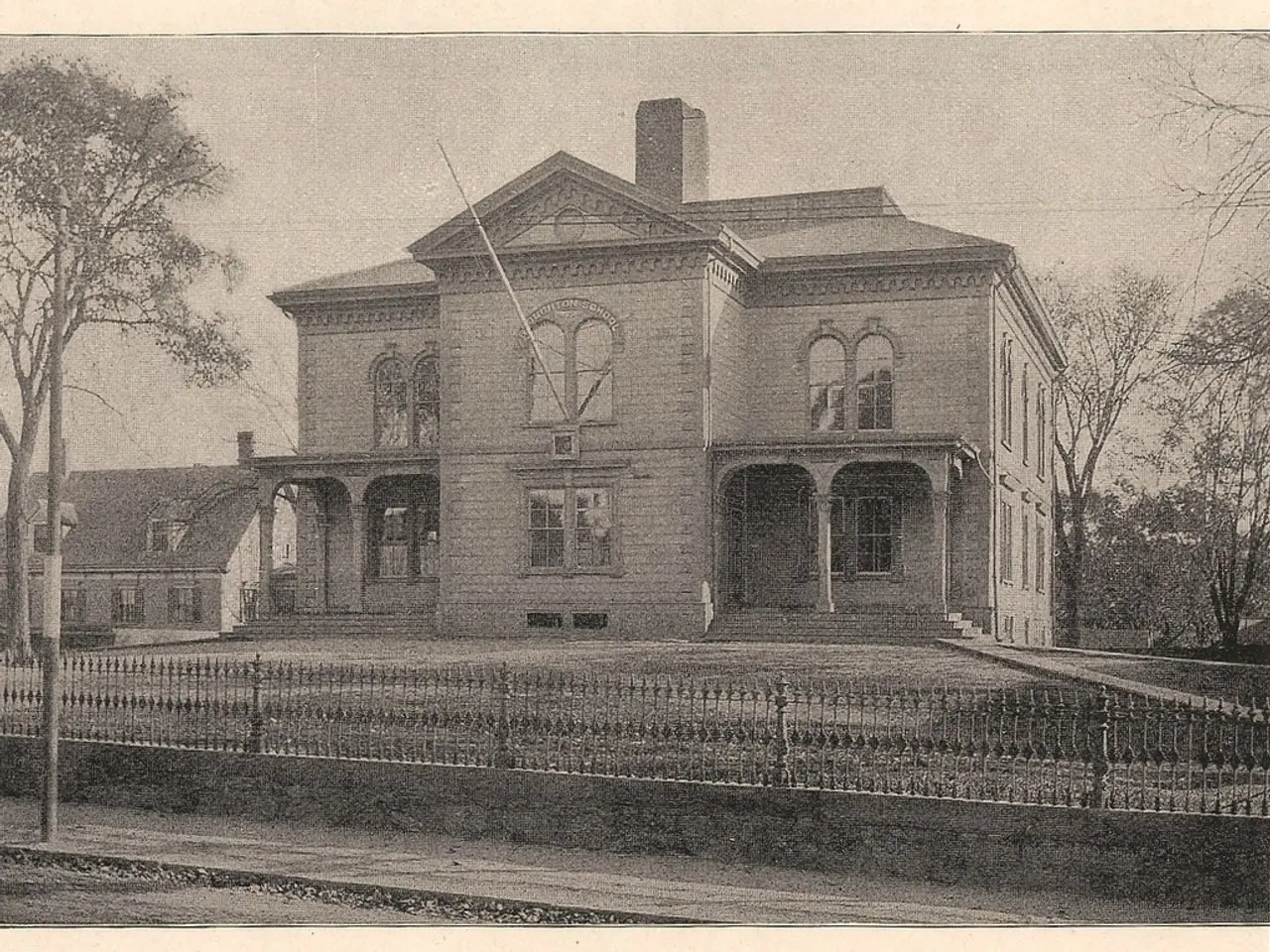Exploring the Feasibility of Constructing Skyscrapers from Wood: A Radical Idea with Environmental Benefits
In the pursuit of sustainable development, a new innovation in wood construction is gaining traction – Cross-Laminated Timber (CLT). This material offers great strength and stiffness while being lightweight and regenerable, making it a promising solution for climate change mitigation in the building sector.
CLT panels, made by gluing together multiple layers of sawn lumber with each successive layer oriented perpendicularly to the one below, store carbon captured by trees long-term in buildings. This carbon sequestration can last for 60 years or more, helping reduce atmospheric carbon levels.
The building construction industry is responsible for around 10% of all global emissions. A new approach involving timber construction could help reduce emissions associated with building high-rise structures. Studies show that widespread adoption of CLT in 30%-60% of new urban buildings from 2020 to 2100 could reduce life-cycle greenhouse gas emissions by 25.6 to 39 gigatons of CO₂ equivalent, which is roughly comparable to total annual global energy-related CO₂ emissions today[2].
Moreover, increased demand for CLT drives up wood prices, incentivizing landowners to convert less productive farmland into managed forests, leading to a global expansion of productive forestland by about 30.7 to 36.5 million hectares by 2100. These intensively managed forests further act as carbon sinks, amplifying climate benefits[2][3].
The shift to mass timber construction could also lead to more forests. As the world's population grows and urbanizes, the emissions from the building construction industry will likely increase. However, with CLT, the demand for wood could stimulate reforestation and better forest stewardship, turning concerns about increased wood demand on their head[2][3].
Researchers have found that building more large timber buildings, such as those made from CLT, could increase forest cover worldwide. CLT has already been used in several high-rise buildings around the world, including a 25-story building in Wisconsin and a 85.4-meter-tall tower in Norway.
Cities could offer subsidies for sustainable, green buildings and build at least some parts of their cities from wood. This could deliver a significant blow to climate change. The widespread adoption of CLT offers significant environmental benefits, particularly for climate change mitigation, through carbon sequestration and forest expansion as well as by reducing emissions from traditional building materials like steel and concrete.
However, it is crucial to ensure responsible forest management to ensure sustainable timber supplies without causing deforestation. When managed well, CLT drives reforestation and better forest stewardship, making it a promising strategy for climate change mitigation in the building sector[1][2][3][4].
References:
- Cherubini, P., et al. (2016). Environmental benefits of cross-laminated timber buildings: A review. Building and Environment, 105, 83-95.
- Cherubini, P., et al. (2018). The global potential of cross-laminated timber buildings for climate change mitigation. Environmental Research Letters, 13(1), 015001.
- Cherubini, P., et al. (2020). The role of cross-laminated timber buildings in mitigating climate change: A review of recent literature. Resources, Conservation and Recycling, 158, 104688.
- Kalliala, S., et al. (2019). Environmental performance of cross-laminated timber buildings: A life cycle assessment. Journal of Cleaner Production, 213, 1198-1207.
- The pursuit of sustainable development has led to a promising innovation in wood construction: Cross-Laminated Timber (CLT), which is gaining traction due to its regenerable nature and potential to combat climate change.
- Studies suggest that CLT could significantly reduce life-cycle greenhouse gas emissions, comparable to total annual global energy-related CO₂ emissions today, by being adopted in 30%-60% of new urban buildings from 2020 to 2100.
- The long-term carbon storage in CLT panels, coupled with the expansion of productive forestland due to increased demand for the material, could help reduce atmospheric carbon levels.
- As the building construction industry, responsible for around 10% of global emissions, transitions to timber construction, it could stimulate reforestation and better forest stewardship, turning concerns about increased wood demand on their head.
- Researchers posit that increased use of CLT could lead to a global increase in forest cover, with several high-rise structures already built using this material around the world.
- Cities could incentivize sustainable, green buildings and use wood in part of their city construction, delivering a substantial blow to climate change while reaping environmental benefits, particularly for climate change mitigation.
- It's essential to ensure responsible forest management to maintain sustainable timber supplies and prevent deforestation, making CLT a viable strategy for climate change mitigation provided it's managed effectively.
- Multiple sources, including academic research and life cycle assessments, support the conclusion that CLT offers significant environmental benefits, contributing to climate change mitigation through carbon sequestration, forest expansion, and reduced emissions from traditional building materials like steel and concrete.





